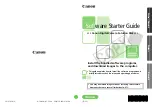
if (bcmp(mtod(m, unsigned char *),
etherbroadcastaddr, 6) != 0) {
8
int ix;
LAN_FIND_MULTI(&sc->is_multi,
mtod(m, unsigned char *),
ix, i);
9
if ( (i != LAN_MULTI_FOUND) ||
10
(sc->is_multi.lan_mtable[ix].muse == 0)) {
m_freem(m);
goto scrap;
}
}
}
}
1
If an
mbuf
was successfully allocated, copies the packet data into the
mbuf
(receive data are 32-bit aligned).
2
Computes the length of the received data, excluding the size of the MAC
header. Records this length in the
mbuf
header. Sets the receiving
interface to be the
if_el
device by saving the
if_el
device’s
ifnet
data structure address in the
mbuf
header.
3
Aligns the data pointer so that the IP header will be aligned on a 32-bit
boundary. Make sure that your network driver does this also.
4
Obtains the pointer to the data and calculates the number of longwords
in the FIFO transfer.
5
Because the EtherLink III performs no multicast filtering, if the
promiscuous bit and all multicast bits are not set, determines whether
any multicast addresses are actually wanted.
6
Reads the first two longwords to determine whether the packet is sent
to a multicast address.
7
Determines whether the packet contains either a multicast or a
broadcast group address.
8
Because the driver receives all broadcasts, makes sure that the group
address is not the broadcast address.
9
Calls the
LAN_FIND_MULTI
macro to find the multicast address.
10
If the multicast is not found, scraps the packet.
13.2.4 Copying the Received Packet into the mbuf
The following code shows how the
el_rint( )
routine copies the received
packet into the
mbuf
:
io_blockread(sc->data,
(vm_offset_t)dat,
(u_long)len,
HANDLE_LONGWORD);
1
13–8 Implementing the Interrupt Section














































